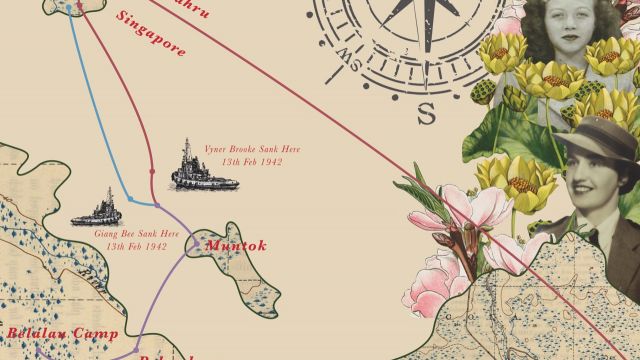The Shoehorn Sonata
When John Misto wrote his play The Shoehorn Sonata in 1995, the Australian Government had not yet built a memorial to the forty-one Australian army nurses who suffered during World War II. It wasn’t until 1999 that a memorial was finally built in Canberra.
Misto acknowledges the heroism of women during the war, pays tribute to those who suffered and brings their stories out of the past and into the present. His play follows the reunion of two very different women - Bridie (Narelle Jaeger), an Australian nurse, and Sheila (Norah George), a British civilian, thrown together in the Japanese Prisoner of War (POW) camps. Fifty years later, they share their stories of survival with TV interviewer Rick (Will Hall).
 Directed by Joanna Joy, Squeaky Dog Productions’ rendition was moving and inspiring. There was something endearing about both Narelle’s portrayal of Bridie, who is somewhat of an Aussie Larrikin, and Norah’s interpretation of Sheila, a prim and proper Brit. Both actors gave heart felt performances, conveying the strength of these two characters and the power of friendship as they relived the horror of war, the bitter-sweet laughter and reopened old wounds that never fully healed. The actors showed a genuine emotion, allowing the audience to really feel what Bridie and Sheila experienced.
Directed by Joanna Joy, Squeaky Dog Productions’ rendition was moving and inspiring. There was something endearing about both Narelle’s portrayal of Bridie, who is somewhat of an Aussie Larrikin, and Norah’s interpretation of Sheila, a prim and proper Brit. Both actors gave heart felt performances, conveying the strength of these two characters and the power of friendship as they relived the horror of war, the bitter-sweet laughter and reopened old wounds that never fully healed. The actors showed a genuine emotion, allowing the audience to really feel what Bridie and Sheila experienced.
While there were tales of horror and tragedy, I loved the playwright’s use of humour to provide comic relief for the audience and show the strength of the human spirit to still be able to laugh despite harsh and cruel conditions.
 As the play is on the high school syllabuses and is touring schools (as well as performing for the general public), the Director explored ways of engaging a younger audience. The use of technology to highlight the shadows lurking in the characters’ shared past was effective, as was the use of music which is integral to the show. Having a simple set and relying on a small number of appropriate props, lighting and sounds to set each scene also meant the audience wasn’t distracted by set changes and could focus on the story telling.
As the play is on the high school syllabuses and is touring schools (as well as performing for the general public), the Director explored ways of engaging a younger audience. The use of technology to highlight the shadows lurking in the characters’ shared past was effective, as was the use of music which is integral to the show. Having a simple set and relying on a small number of appropriate props, lighting and sounds to set each scene also meant the audience wasn’t distracted by set changes and could focus on the story telling.
What I discovered, after I had seen the show, was that some of the props had a personal significance to one of the actors whose father was a war veteran – a nice touch to include these.
I felt the production also tried to engage high school viewers by having a younger actor play the part of Rick. In other productions, the TV interviewer is an off stage voice, however in this production Rick was on stage. The character had a certain naivety as he tried to comprehend the horrors of war. At times, there was a bit of discord with how Rick was described in the script and how he was portrayed. I would have liked to see a more forceful interviewer with a charismatic side, trying to draw the two women’s stories out more.
An enjoyable production, celebrating women, their strength and heroism. Definitely worth seeing if you are studying the play. Don’t forget the tissues though, this one will make you laugh and cry!
Shannon O’Connell
Subscribe to our E-Newsletter, buy our latest print edition or find a Performing Arts book at Book Nook.

